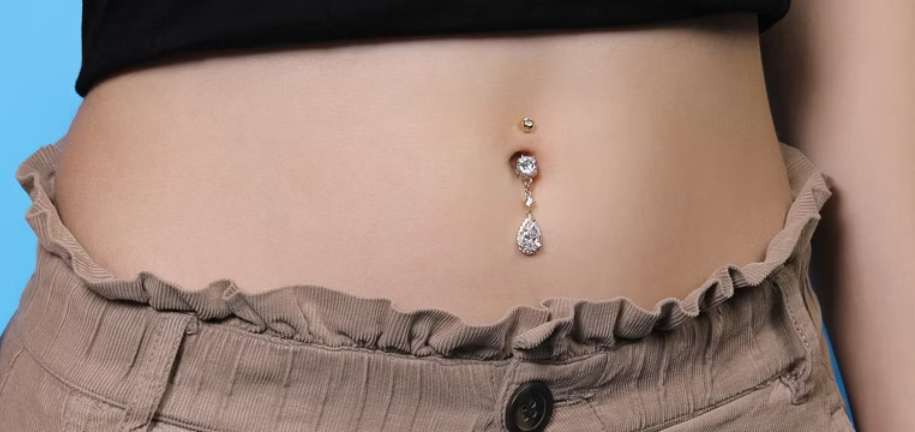
All About Belly Button Piercings
A Complete Guide To Belly Button Piercings And Care
Belly button piercings are among the most popular in the Western world, and also at Bodymod. Back in the day, punks popularized this piercing in the late 80s. Today, it is young girls who typically get it done. But actually, anyone can have them.
What is a belly button piercing?
A can typically be done in two ways. The most common is to pierce the skin just above the navel itself, at around 1 centimeter high.
Another way to do a belly button piercing is by piercing the tissue right under the navel. This kind is called a top-down belly button piercing or reverse belly button piercing.
What kind of piercing jewelry should I wear?
Curved bars are the most popular - they’re sometimes called bananas - You can choose them to be simple or with dangling ornaments.
You can wear top-down belly bars in a reverse navel piercing or just regular curved barbells, turned upside down. Lately, we also see more and more people wearing in their navel piercings, but you should use that only after your piercing is totally healed.


What are the steps to get a navel piercing done?
A belly button piercing is done much in the same way as so many other piercings.
- First, the area is disinfected and the exact location is marked with a sterile skin-marker.
- Then the piercer grasps the area with sterile forceps to compress the skin and passes a one-time use, sterile and hollow needle through. That’s when you feel a brief prick. The forceps are lightly removed and a cork plug is stuck at the end of the needle to protect skin.
- The piercing jewelry rod is then inserted inside the hollow needle. The needle is finally removed and the piercing ball is screwed on.
- The piercer will disinfect the area once again.
Is it painful to get a belly button piercing?
Not really! On a scale from 1 to 10, the pain to get a belly button piercing is 2.
Who can get a belly button piercing?
Every country has different laws in regards to piercing jewelry and body modification.
In England and Wales, there is not a required minimum age to get pierced; although studios might impose their own. In Scotland, young people under 16 years old can be pierced as long as their parents are present and they have given written consent.
So in theory you could have your piercing done even if you're not 18 yet, as long as your parents agree.
What materials should I choose?
For a brand-new navel piercing, titanium is typically used. However, it has become increasingly popular to use micro-polished surgical steel, as it does not release nickel and the material is cheaper.
It’s recommended to start with a titanium piece, especially if you suffer from a nickel allergy.
If possible, you should avoid changing your navel piercing during the healing period. Once the healing period is over, you can change your jewelry to, for example, acrylic or 14K gold.
If you do a lot of sports, it may be a good idea to wear PTFE. It can be sterilized by an autoclave (a special machine for piercing jewelry) and is flexible. This material is advisable when you are exposed to bending and bangs.
What size should I use?
The standard size for belly button jewelry is 10 mm long and 1.6 mm in thread thickness. These are the measurements for standard bars, but many people use shorter rods. If you want to wear noticeable piercing bars, you should go for those with a top ball of 5 mm and a bottom ball of 8mm. If you want to be more discreet, the ball sizes should be 4 mm at the top and 6 mm at the bottom.
Can my body reject my belly button piercing?
Unfortunately yes, all kinds of piercings have the risk of being rejected by our bodies. If your piercing is not well done or if you have not worn jewelry in the sizes recommended by professional piercers, your body is more likely to reject it.

Posted in:
